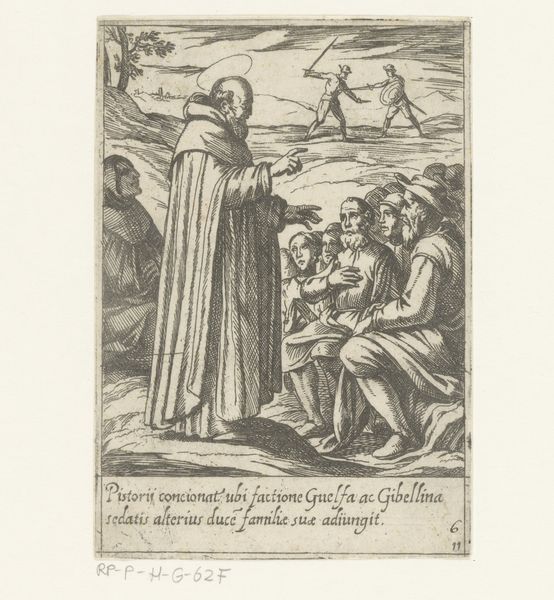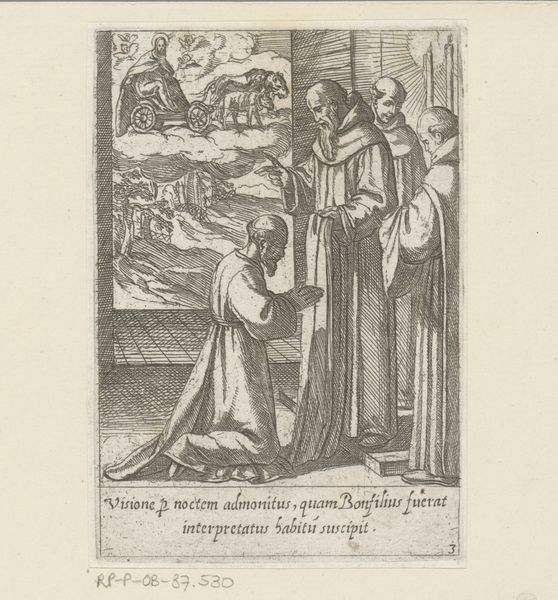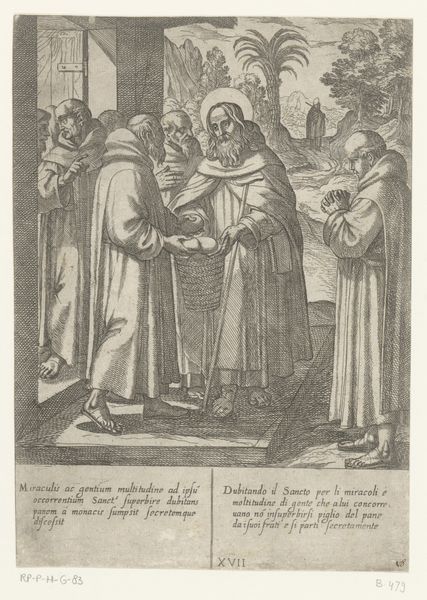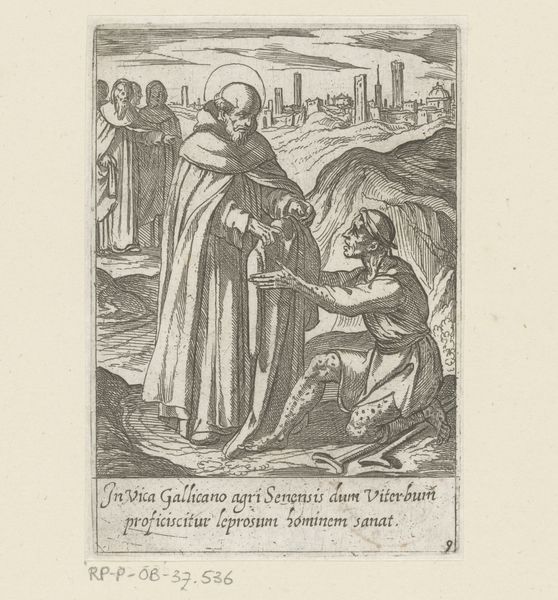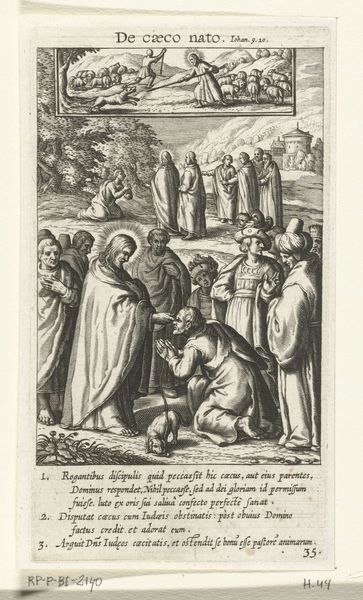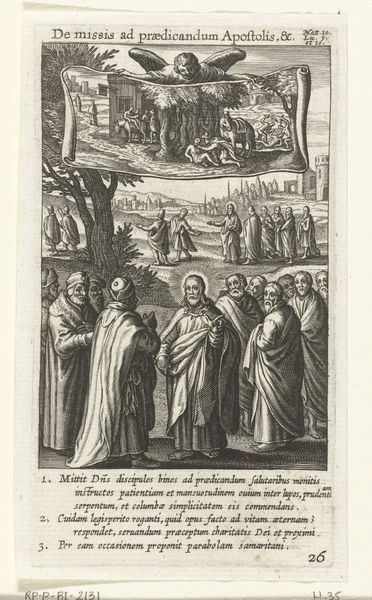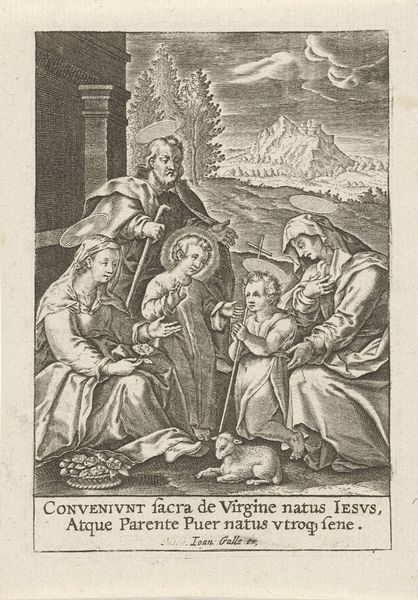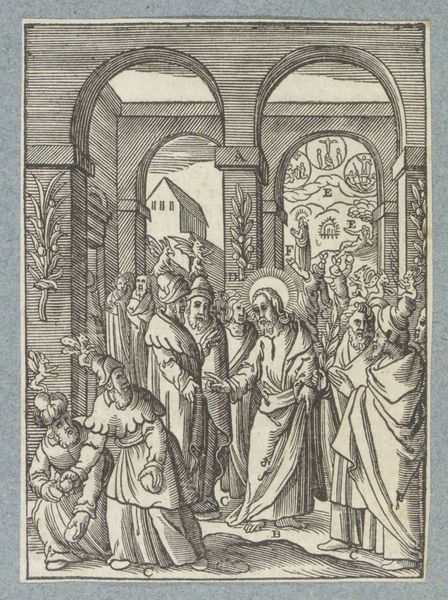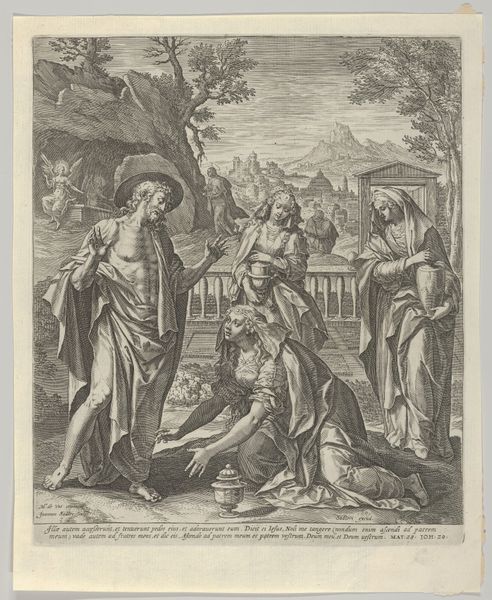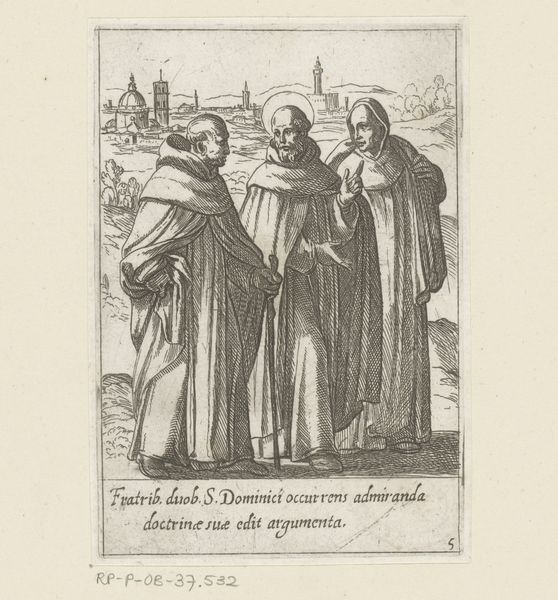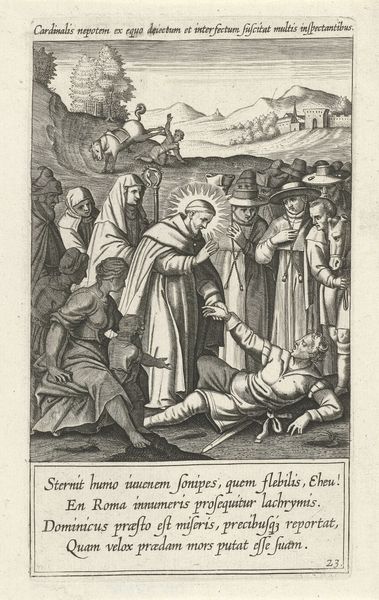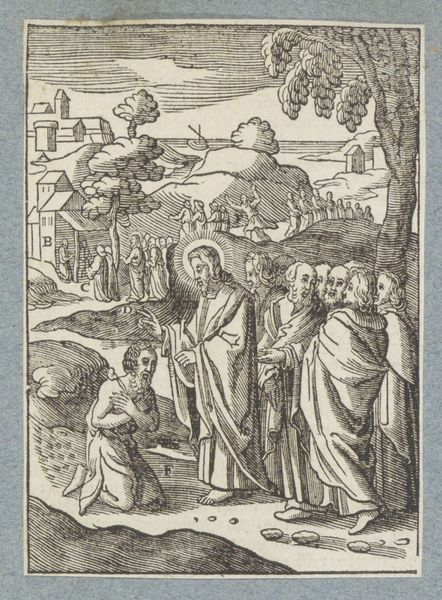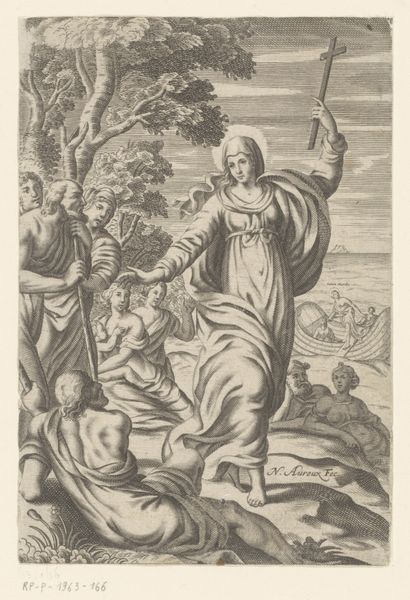
engraving
#
narrative-art
#
landscape
#
figuration
#
line
#
genre-painting
#
history-painting
#
italian-renaissance
#
engraving
Dimensions: height 115 mm, width 80 mm
Copyright: Rijks Museum: Open Domain
Curator: Welcome! Before us hangs a captivating piece, "De heilige Philippus bekeert twee prostituees tot kuisheid," or "Saint Philip converts two prostitutes to chastity," by Antonio Tempesta, created in 1591. It's currently held here at the Rijksmuseum. Editor: My eye is immediately drawn to the line work. It's incredibly intricate and really directs your focus through the narrative unfolding here. You can see it in the folds of fabric, the landscapes… there's almost a raw, immediate feel to it. Curator: Indeed. Tempesta's work in engraving allowed for detailed narrative scenes, particularly within the context of the Italian Renaissance, there was high demand for prints, so workshops scaled up the production and began hiring assistants to focus on the figures and backgrounds of prints. This shift highlights the commodification of virtue and the industry built around these didactic stories, meant for consumption by a specific audience seeking moral guidance. Editor: And note how he's structured the scene, the formal qualities lend so much. Saint Philip, haloed, occupies the composition's center. Two kneeling figures implore him, whilst the cityscape beyond creates a stage. It gives a striking visual hierarchy to faith and social transformation. Curator: Considering it was a reproduction process, the use of specific papers, inks, and presses influenced the print's dissemination and affordability. The lines could create depth of field for mass market audiences who sought an accessible understanding of biblical scenes. Editor: That is right, even the use of space directs the eyes to its focal point in how Tempesta organized this two-dimensional picture plane, so every form can embody multiple levels of meaning, beyond its religious instruction! Curator: Absolutely, it prompts us to examine the economic structures of printmaking at the time. Tempesta could be pointing towards societal imbalances inherent to the rise of print production and consumer culture, highlighting concerns that art might be bought rather than sought through earnest labor and devotion. Editor: Well, whatever you believe about Antonio Tempesta’s intentions here, its artistry is arresting. There are many fascinating qualities and considerations in this singular, arresting, print!
Comments
No comments
Be the first to comment and join the conversation on the ultimate creative platform.
